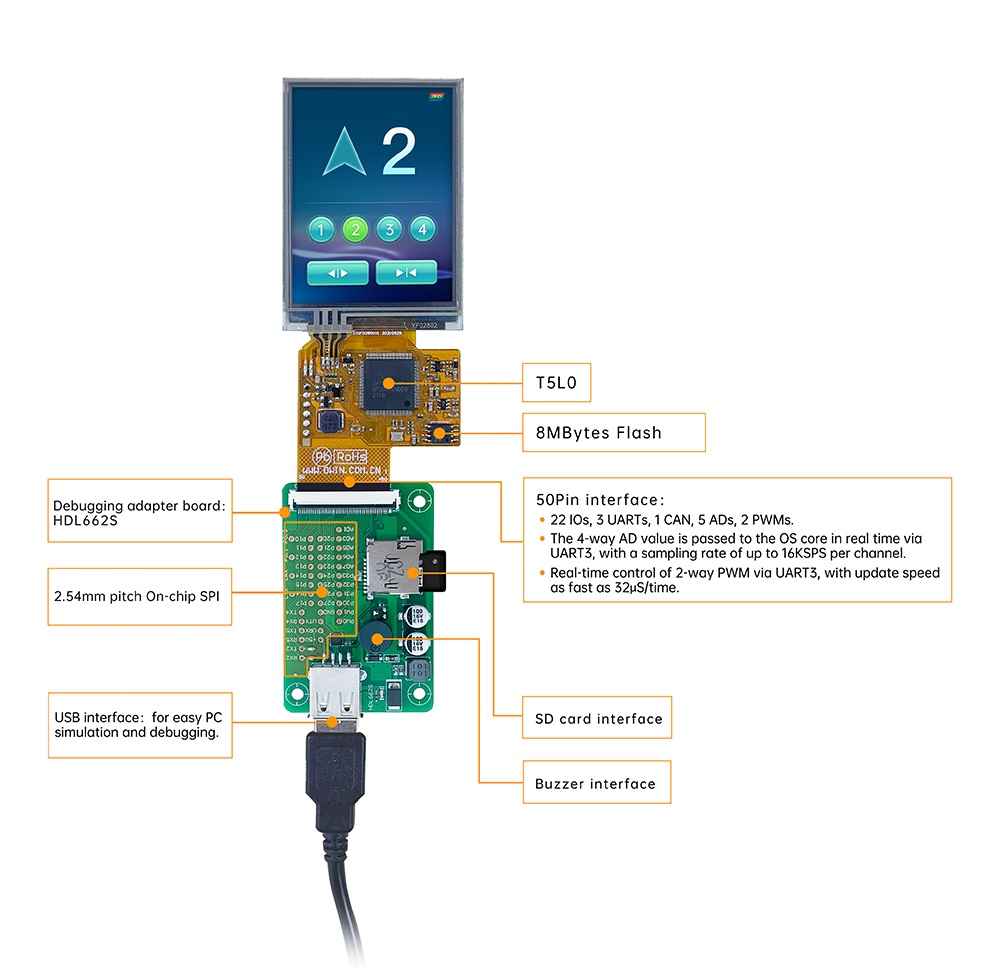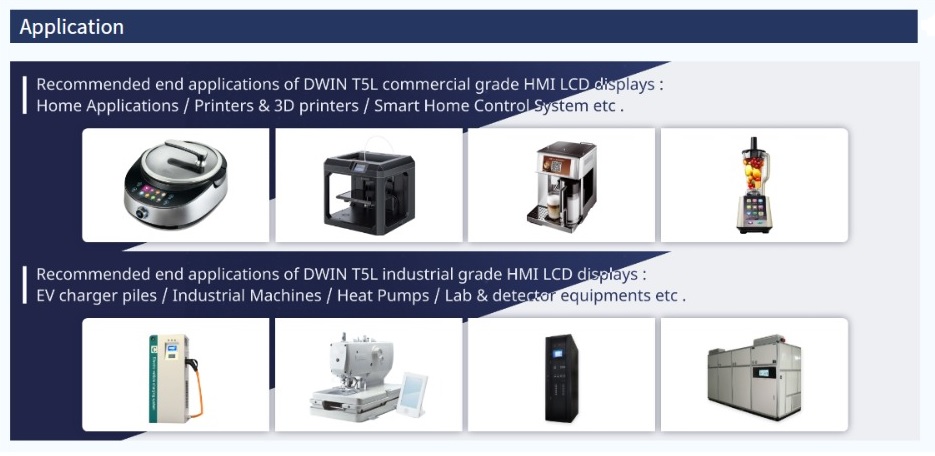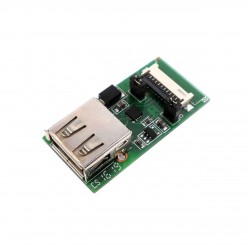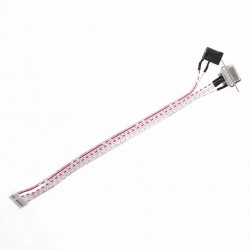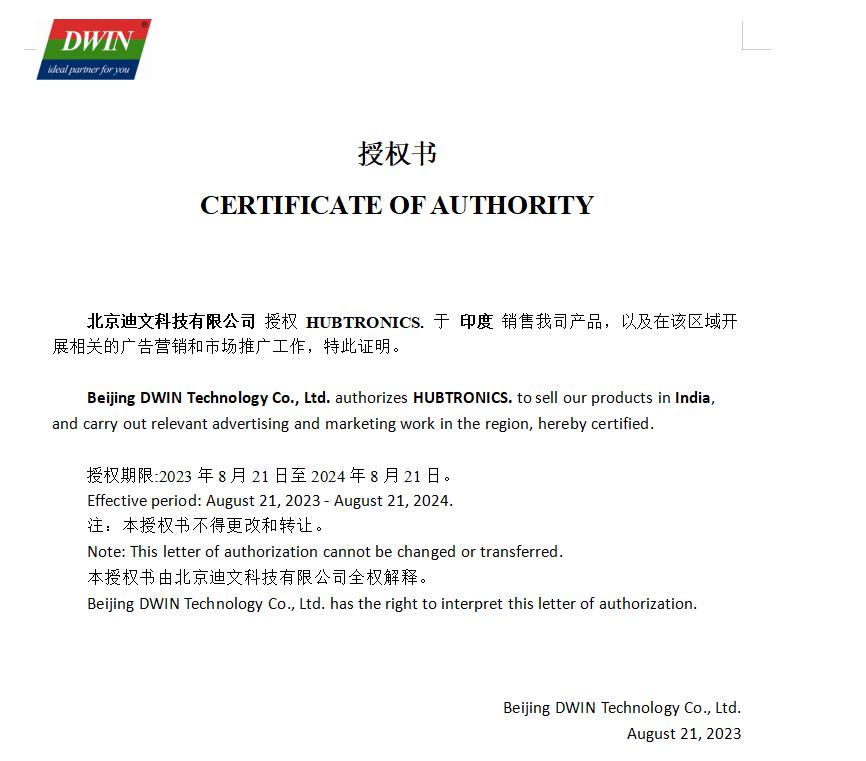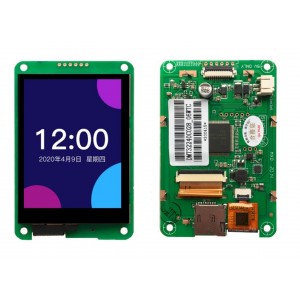
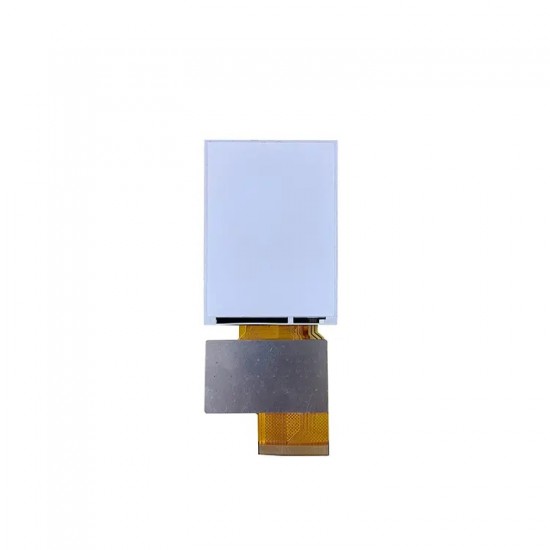


DWIN
₹676.27 + 18% GST
B2B GST Credit Available
DWIN 2.8 Inch No Touch, TN TFT 240x320 350nit COF UART LCD Display, DMG32240F028_01WN
The DWIN HDL662B Adapter Board is used to debug the LCM LCD Modules / LCD displays. The board has a USB connector on one side and 10 pins 1mm pitch F..
₹513.00
Ex Gst ₹434.7520cm 8Pin 2.0mm Cable HDL65011 with DB9 and power interface for DWIN HMI LCDsThis is a custom made DB9 cable which allows DWIN HMI LCDs RS232 interfac..
₹77.88
Ex Gst ₹66.00PGT05 - JTAG Kernel/ OS Burner Hardware for DWIN HMI LCDs PGT05 is a JTAG programmer which is specifically designed to update the OS/GUI Kernel (..
₹799.00
Ex Gst ₹677.12FCC1015A Cable 10Pin 1.0mm Pitch 150mm Opposite Side Contact FFC Cable for DWIN HMI This is an accessory cable to be used with HDL662 USB to Seri..
₹28.32
Ex Gst ₹24.00HDL65013 8 Way 2.00mm Connector Cable for DWIN HMI LCDsThis is an 8 way board to board connector. It can be used to connect the DWIN HMI LCDs to the d..
₹70.80
Ex Gst ₹60.008 Pin 2.0mm Pitch Connector Socket for DWIN HMI LCDs Compatible with HDL65013This connector is an accessory for DWIN HMI LCDs. This connector can be u..
₹15.00
Ex Gst ₹12.71FCC-10-1.0 10Pin 1.0mm FCC Socket for DWIN HMI LCDsThis is an accessory for DWIN HMI LCDs. It is used as an user interface connector in many DWIN HMI ..
₹29.50
Ex Gst ₹25.00This is an accessory cable meant to be used with HDL662B Adapter. It allows connection of HDL662B module with the host PC for programming and de..
₹147.50
Ex Gst ₹125.00DWIN - HDL662S Debugging Adapter Board for CoF LCDsHDL662S is a debugging adapter board designed for F series COF screens. Lead out 22 IO ports, 3 UAR..
₹588.00
Ex Gst ₹498.3116GB Class10 Micro SD CardMicro SD card with high speed class 10 specifications. With 16 GB memory capacity this SD card is suitable for usage with va..
₹299.00
Ex Gst ₹253.39The product image is indicative, actual product may vary in color and looks. FeaturesLow cost and compact micro SD card reader module. High tran..
₹49.00
Ex Gst ₹41.53HL-340 - USB to RS232 Adapter Cable - CH340 BasedCH340 chip based USB to RS232 full modem cable with moulded connector housing. This cable works p..
₹110.00
Ex Gst ₹93.22DWIN HDL662K USB to Serial Port FFC Adapter Board - 10 Pi 1.0mm FCC InterfaceThe DWIN HDL662K USB to Serial Port FFC Adapter Board is a compact and re..
₹649.00
Ex Gst ₹550.00WiFi-10 module for DWIN Cloud Development Platform ESP8266 + 4MB flash 2.4-2.5G AdapterThe WiFi-10 module is a feature-rich component designed for sea..
₹447.00
Ex Gst ₹378.81₹798.00
All Inclusive, Shipping Calculated at Checkout
Assured Cashback of ₹ 7
B2B GST Credit Available
Price in reward points: 676
- Stock: 0 in Stock
- SKU: 05246
- Delivery Time
- Bulk & B2B RFQ
DWIN 2.8 Inch No Touch, TN TFT 240x320 350nit COF UART LCD Display, DMG32240F028_01WN
This is an DWIN 2.8 Inch No Touch, TN TFT 240x320 350nit COF UART LCD Display. The Dwin 2.8inch COF LCD Based on T5L0, running DGUS II system, Which comes with 240x320 resoltion, 350nit brightness, 262K colors.
Features
- Based on T5L0, running DGUS II system.
- 2.8 inch, 240*320 pixels resolution, 262K colors, TN-TFT-LCD, normal viewing angle.
- LCD and TP air bonding process.
- COF structure. The entire core circuit of the smart screen is fixed on the FPC of LCM, featured by light and thin structure, low cost and easy production.
- 50 pins, including IO, UART, CAN, AD and PWM from user CPU core for easy secondary development.
Specifications
- Color : 262K colors
- LCD Type : TN, TFT LCD
- Viewing Angle : Normal viewing angle, typical value of 70°/70°/50°/70°(L/R/U/D)
- Display Area(A.A): 43.2mm(W) ×57.6mm(H)
- Resolution : 240*320
- Backlight : LED
- Brightness : DMG32240F028_01WN: 350nit
Voltage & Current
- Power Voltage : 3.6~5.5V, typical value of 5V
- Operation Current :> 110mA VCC=5V, max backlight, WTC:-WN:75mA VCC=5V, backlight off
Reliability Test
- Working Temperature : -10℃~60℃
- Storage Temperature : -20℃~70℃
- Working Humidity : 10%~90%RH, typical value of 60% RH
Interface
- User interface : 50Pin_0.5mm FPC
- Baudrate : 3150~3225600bps
- Output Voltage : Output 1;3.0~3.3 V, Output 0;0~0.3 V
- Input Voltage(RXD): Input 1;3.3V, Input 0;0~0.5V
- Interface : UART2: TTL;, UART4: TTL;(Only available after OS configuration, UART5: TTL;(Only available after OS configuration)
- Data Format : UART2: N81; , UART4: N81/E81/O81/N82;4 modes (OS configuration), UART5: N81/E81/O81/N82;4 modes (OS configuration)
Interface Introduction
